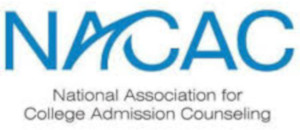“No matter where you go, there you are” applies to college students and cowboy movie heroes. Shane, the gunfighter, cannot escape his past. Can college applicants create their own future?
Parents’ stress surrounding admissions to highly competitive colleges (hereafter “HCC”) is as misguided as it is unfortunate. Kids who can do stuff–read, write, think–do better than those who can’t. It doesn’t matter where they go.
Where kids go to college doesn’t matter? Sound like an outrageous claim?
Here’s what never happens: Stanford rejects Joey, an able student. He matriculates at North Cornstalk Drooling Community College (hereafter NCDCC.) Because Stanford has a six year graduation rate of 94% while only 15% of NCDCC students end up with a sheepskin in a comparable period, his parents fear that Joey will never graduate.
Wrong.
To the contrary, here’s what happens: Joey does beautifully at NCDCC in the classroom and out. He is one of the 15% of North Cornstalk students who does indeed get a degree. As a matter of fact, his professors–who know him well and like him–write him beautiful letters of recommendation and he goes on to a successful career as a pathologist.
Or here’s an even more likely scenario: Joey, having been denied at Stanford, one of the two hundred schools in this country that rejects more than 50% of its applicants, goes to one of the two thousand schools in this country that admit more than 50% of their applicants.Then he goes on to medical school.
“But wait,” my clients argue. “Isn’t it true that Stanford grads are admitted to graduate schools in disproportionate numbers? Isn’t it the case that kids who graduate from Stanford have a 92% acceptance rate at medical school, a 96% acceptance rate at law schools and a 104% acceptance rate at business school?”*
Yes, it’s true: Stanford grads do well in the graduate school admissions process. But researchers have to know who is going into their study before they can talk about who is coming out. The kids who got admitted to Stanford were pretty high profile to begin with–lots of advanced courses, good grades, high test scores, positions of leadership. Throw a Stanford kid in a small room with a bare light bulb, a stale loaf of bread and an organic chemistry book and she’ll come out three days later with whole chapters of the book memorized like Macbeth. (Like Macbeth in that she has memorized whole chapters of the organic chemistry book. Not like Macbeth who, to my knowledge, neither went to Stanford not studied organic chemistry.)
Students who were strong students to begin with go to Stanford. It’s no wonder that these students come out with their faculties intact. That Stanford doesn’t make their students dumber in hardly an indication of the excellence of their curriculum or pedagogy.
Which is not to say that Stanford isn’t a great place to get an education. There are worse ways to spend four years than in Northern California, minutes from the Pacific Coast Highway, a short commute from Fisherman’s Wharf and the Golden Gate Bridge. And in fairness the facilities truly are outstanding, the professors brilliant and the other students accomplished, connected and vibrant.
I’m only pointing out that for kids who don’t get in to Stanford there are other wonderful choices out there. And that Who You are in infinitely more important than Where You Go.
Shane is a gunfighter: No matter how much times he spends trying to be a farmer, no matter how many courses he takes at Stanford, no matter if he gets his degree from North Cornstalk Drooling Community College.
* Math joke. Sorry.


